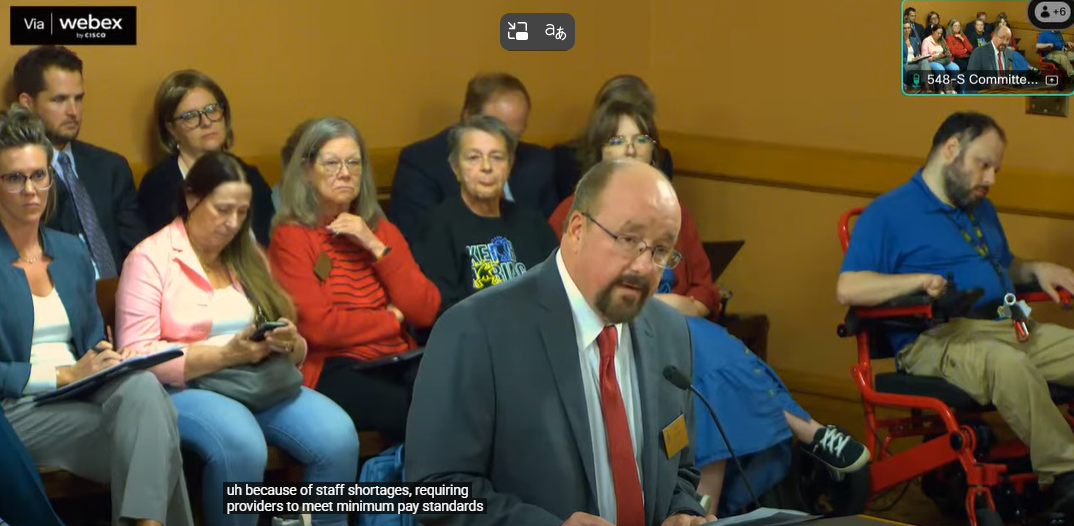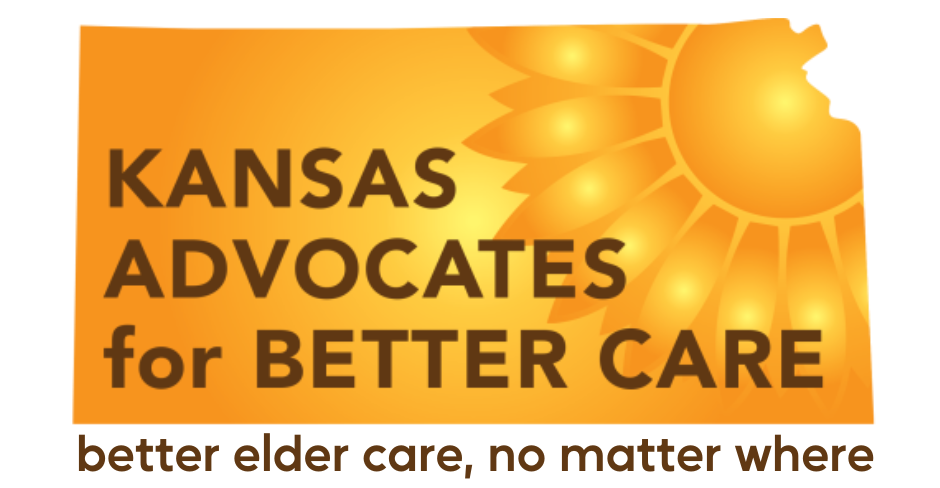Facility #2, 3, 4, and 5, Interview with Steve
September 2, 2025
In-person interview with Steve
Facility #2, 3, 4, and 5
So, my oncologist did not discover I had a tumor until it was 15 pounds, and it was too much for them to handle. They referred me to a hospital who in turn referred me to a medical center and I had to be approved by a committee of 5 doctors there because of the advanced tumor and my age. They finally agreed that they would do surgery, and four doctors took 7 hours to remove the 15-pound tumor, my prostate and my bladder. Then I was at a facility for 11 months for rehab, then I moved to [facility #2] closer to home where I was a resident for well over a year. Unfortunately, at that facility as I reported to KABC earlier, there were some very serious medicine mix-ups. I called it to their attention and management and the final straw was when a 4 pm in the afternoon and a med tech came in my room and said “Steve, why did you order these COPD medicines, you’re not sneezing, you’re not coughing, you’re not congested” and I said, “I didn’t order them” and he responded that a nurse called and ordered them that morning. I then responded, “I didn’t see a nurse today”. What happened was that someone on staff at that facility #2 did an exam of a different patient and then called it in to my pharmacy and my doctor; it was a total mix-up. And that previous month, I had 3 medication mix-ups in my daily medication that had to get straightened out. The thing is, I’m not in rehab, I’m on Hospice and I’m counting on the organization to take care of me.
So, I left there and went to a different facility (facility #3). I was there for 27 or 28 days, and it was really very depressing because the place is dark: it’s not well managed. The manager had no training in facility’s management, or restaurant management. At facility #3, I was probably 25 or 30 feet from the kitchen; I got cold food every day. Most of the people there were what I would say as post-vocal. They are mainly silent. A lot of them grumbled to themselves. They don’t have the energy to say, “hey, take this food back” or “I want it warmed up”. Some of them don’t have any advocates. In that facility, I found out that they had very weak nursing staff. When I say “weak”, I would say, poorly trained. At least two of the nurses were impaired and I had two or three meetings with top management there to explain things. Even simple things like they had the kitchen door put on backwards. People kept bumping into each other, I mean it was so silly. The other thing is, as an example, the cake, you had to cut it with a knife and fork because it was so hard. I said to the director, “can’t you please follow the recipe on the box or bag about how to make a cake?” and it never came out any better. The place lacked good maintenance. Because of the food and the staffing issues, I left and went to another facility (facility #4).

On Monday, October 13th, Dan Goodman, Executive Director of Kansas Advocates for Better Care (KABC), delivered testimony before the Robert G. Bethell Joint Committee on Home & Community Based Services & KanCare Oversight. His remarks focused on the urgent need to strengthen Kansas’ long-term care system through sustainable funding and workforce investments. Goodman urged legislators to provide additional funding for the Home and Community-Based Services (HCBS) Frail Elderly waiver , noting projected shortfalls of $27 million in FY26 and $70 million in FY27. Without intervention, hundreds of older Kansans could face placement on a waitlist as early as this fall—delaying access to critical in-home services and increasing the risk of premature institutionalization. He also highlighted the need to support and stabilize the state’s long-term care workforce by exploring innovative approaches used in other states. For example, New Mexico’s Competitive Pay for Professionals program has helped attract and retain workers by linking higher wages to improved reimbursement rates and accountability measures. Goodman suggested Kansas consider similar models to strengthen its caregiving workforce and ensure providers can offer competitive pay. KABC remains committed to advocating for policies that promote quality care, protect older adults, and sustain a strong, well-supported caregiving system across Kansas. Read KABC’s full testimony here: View Testimony (PDF) Watch a full recording of the committee here: YouTube Link

On October 1st and 2nd, the 2025 Special Committee on Health and Social Services met, with the first day devoted to nursing home surveying and credentialing. The joint committee of both House and Senate members heard from the Kansas Department for Aging and Disability Services (KDADS), the Long-Term Care Ombudsman, industry representatives from Kansas and out of state, administrators, and contractors. Notably absent were the voices of consumers, their family members, and facility staff , the people most affected by long-term care policy. The committee heard information about: Survey Backlogs and Staffing Challenges KDADS contracts with the federal government to inspect adult care homes for health and safety compliance. KDADS has struggled for years to meet federal requirements, due in large part to recruiting and retaining nurse surveyor positions. More than half of the 60 approved positions were vacant earlier this year. As a result, Kansas currently averages 19.9 months between nursing home inspections , far beyond the federal requirement of 12-15.9 months. With just over 300 federally licensed facilities in the state, timely inspections are critical to protecting residents. To address this, KDADS eliminated 15 vacant positions and raised starting pay: up to $60,000 for multidisciplinary surveyors and $67,000 for RNs . The agency is also considering incentives to encourage more RNs to work as surveyors. Kansas has one of the highest rates of the most serious deficiencies, known as Immediate Jeopardy (IJ) deficiencies, in the nation , citations for situations where resident health and safety are at serious risk. The committee explored the possibility of privatizing the survey process. Resident Rights at Risk Testimony also revealed troubling practices in some nursing homes, including charging residents $200–$300 per month in “pharmacy provider” or “medication set-up” fees if they choose to use an outside pharmacy. This practice undermines residents’ right to choose their own providers and unfairly penalizes private-pay residents, already shouldering an average of $7,000–$8,000 per month in nursing home costs. Involuntary Discharges and the Ombudsman’s Recommendation The Long-Term Care Ombudsman urged lawmakers to expand discharge reporting requirements. As she noted: “Federal regulations require a notice to be sent to our office for a facility-initiated transfer (involuntary discharge) in federally licensed nursing homes, but that is not the case for state licensed homes, assisted livings, home pluses and residential health care facilities. With the help of our office, we can often help resolve the reason for the discharge notice to prevent a resident transfer or support the resident to ensure a transition occurs safely.” The committee heard concerns from representatives of the nursing home industry and decided to delay making a recommendation on this issue, noting that additional information is needed. KABC has advocated for not only strengthening the reporting requirements but also giving residents of assisted living facilities the same right to appeal an involuntary discharge that nursing home residents enjoy. Raising the Personal Needs Allowance The Personal Needs Allowance (PNA) for nursing home residents is a monthly stipend that Medicaid recipients can use for personal expenses. In Kansas, the PNA is just $62 per month. Many residents express concern that this amount is insufficient to cover basic personal expenses such as haircuts or undergarments. An immediate increase to the allowance is needed, along with an ongoing adjustment to keep pace with rising costs. The Long-Term Care Ombudsman recommended a PNA increase to the national average of $72 with an additional annual Cost of Living Adjustment. KABC’s Position KABC will continue to advocate for: • Strong oversight of nursing homes. • Resident rights protections, including freedom of choice in providers. • Central inclusion of residents and staff voices in all policy discussions. You can watch the hearing on the Kansas Legislature’s YouTube channel here . KABC will continue to monitor these conversations closely as the 2026 legislative session approaches.




